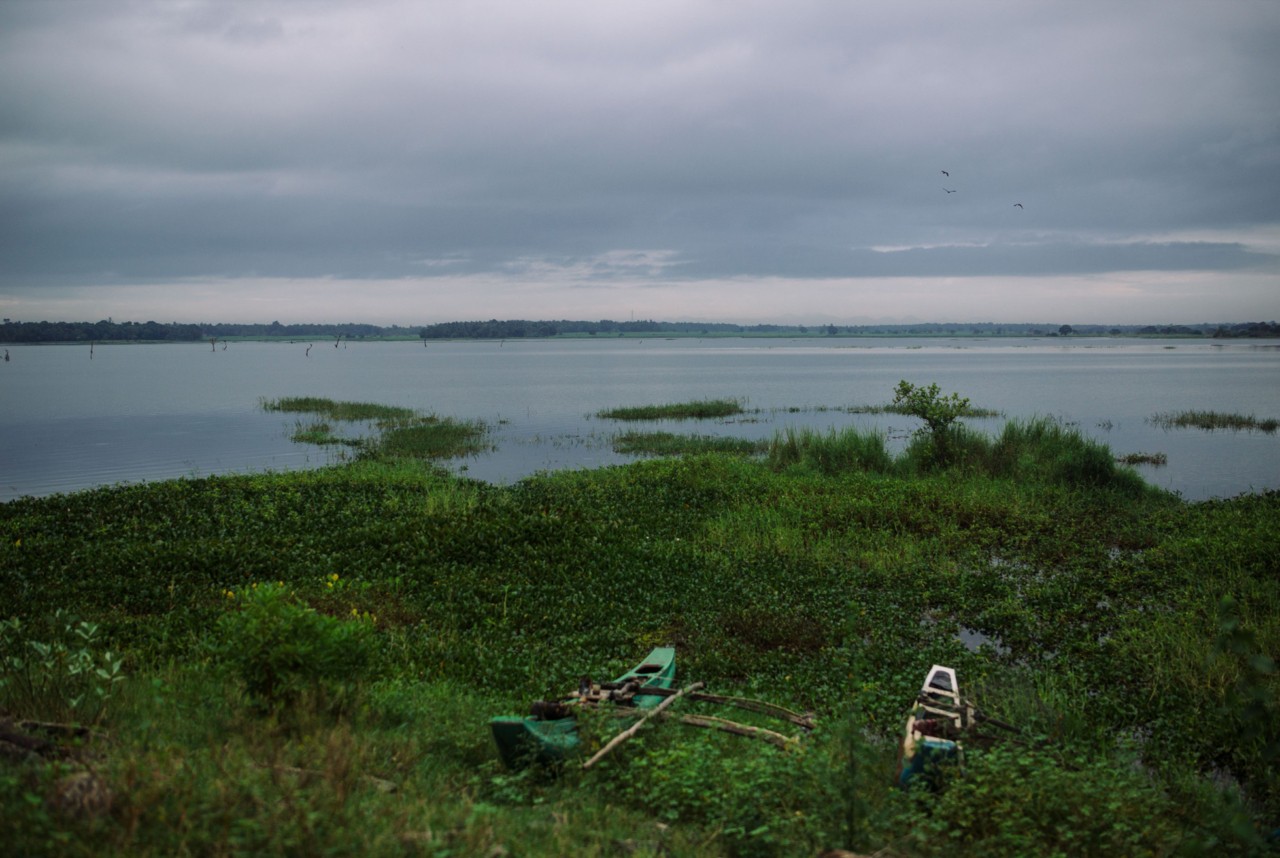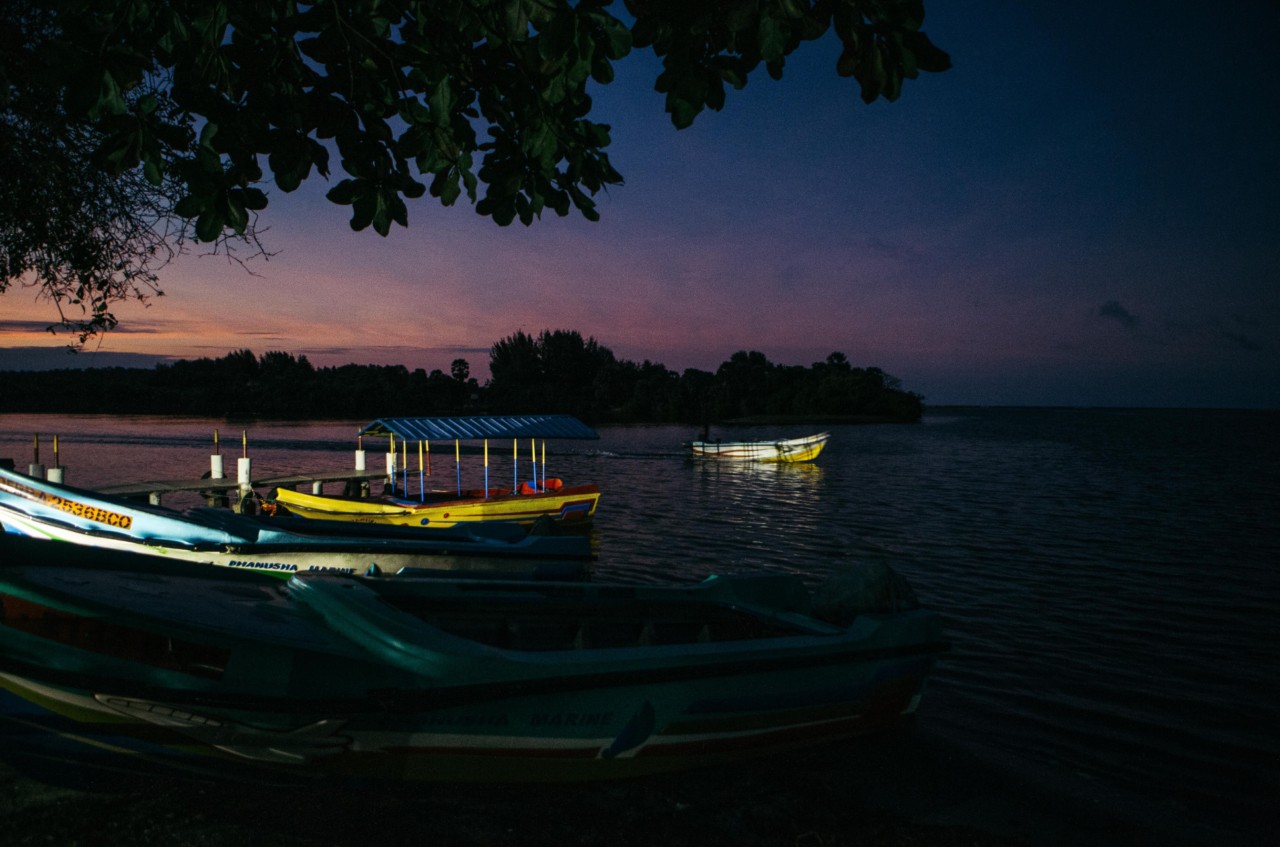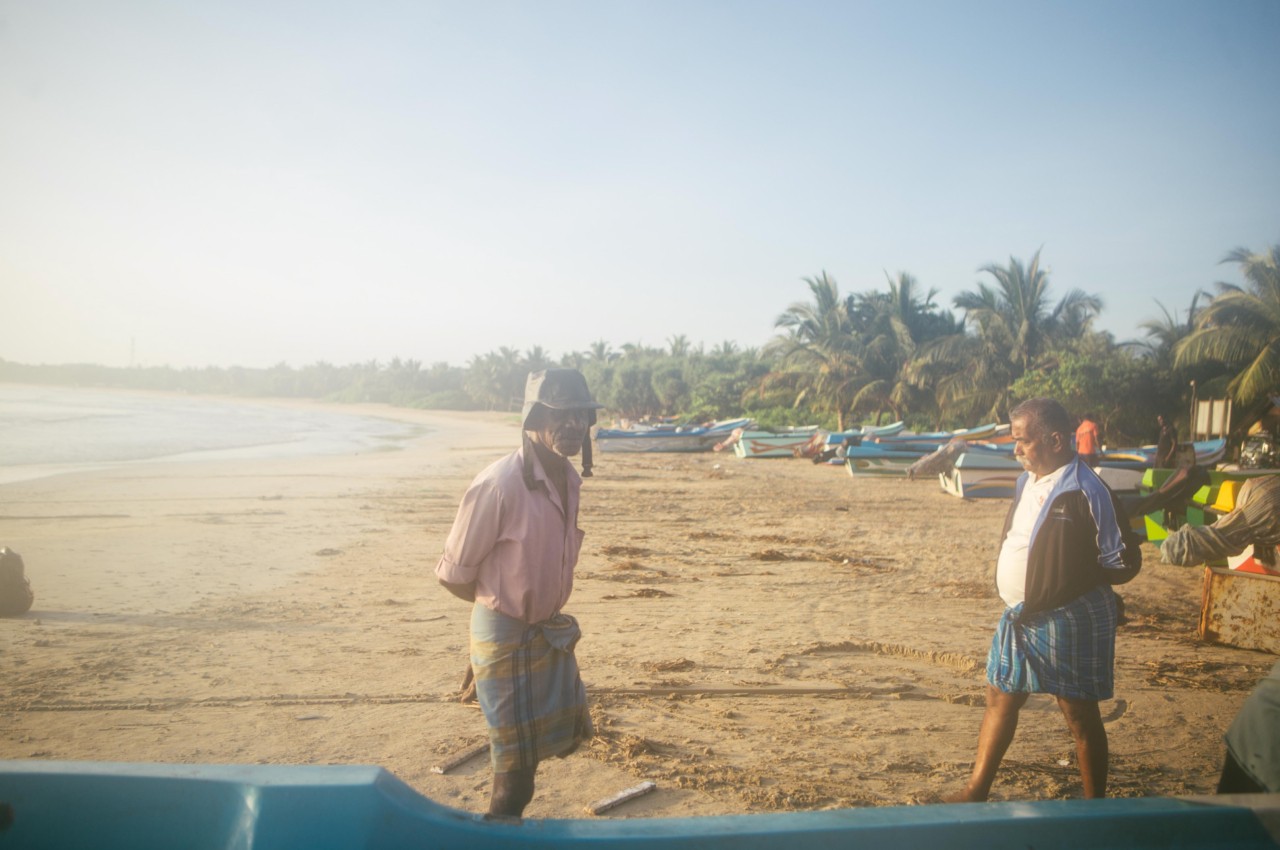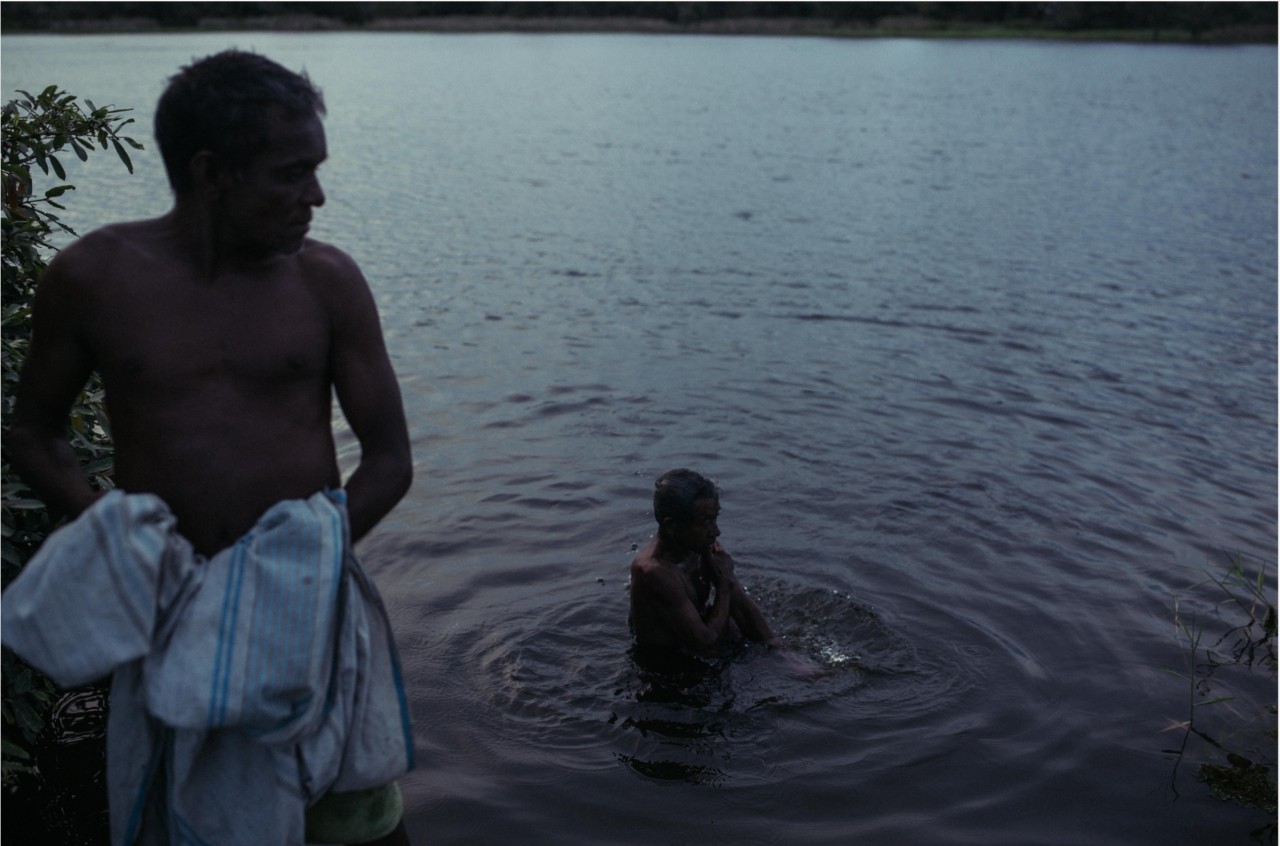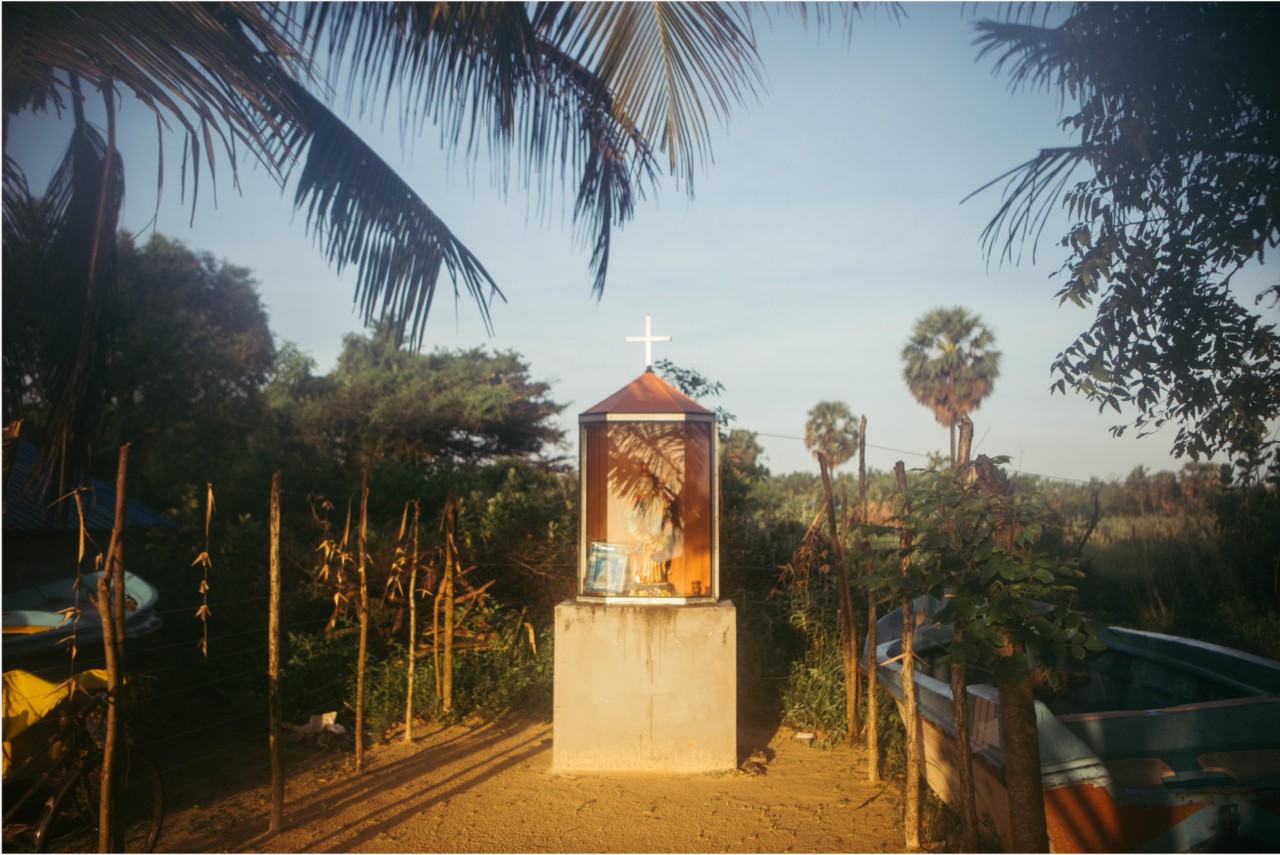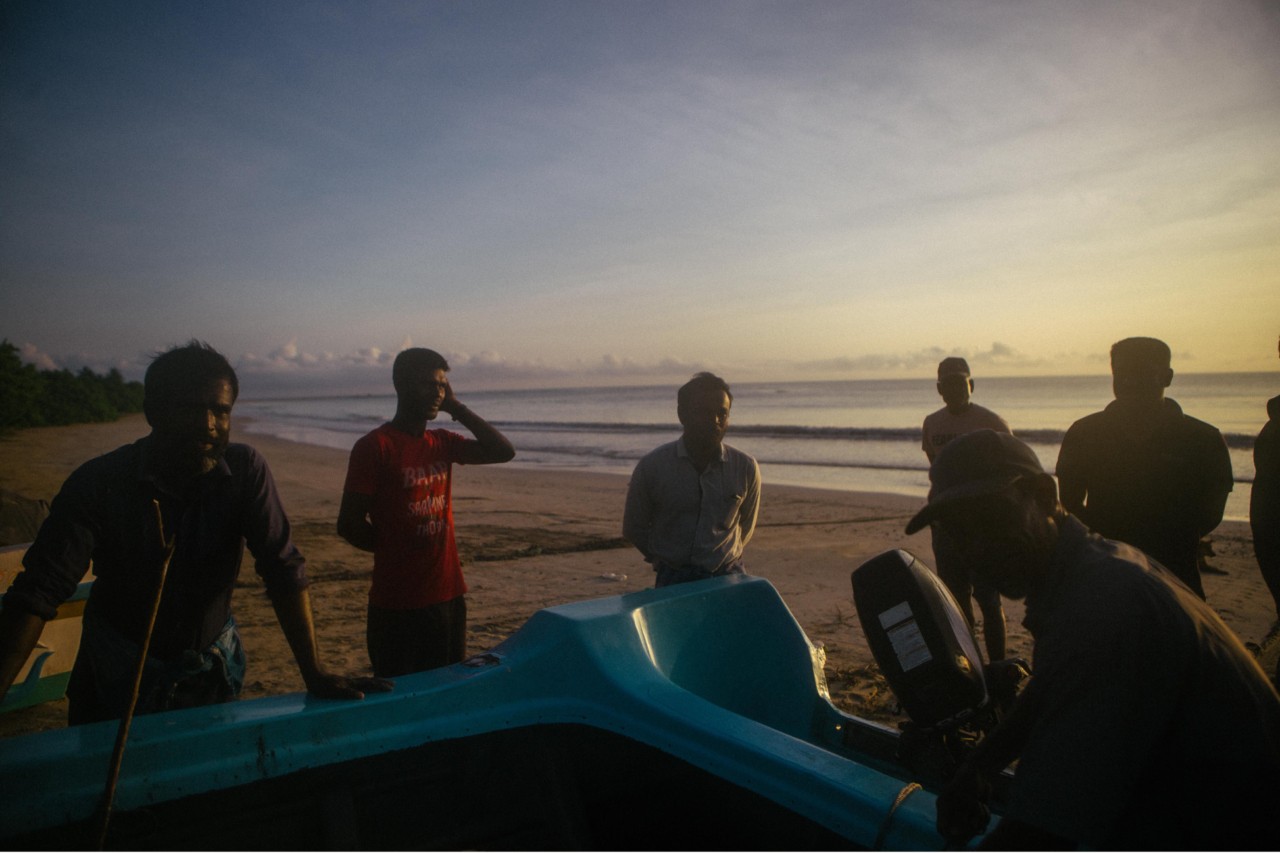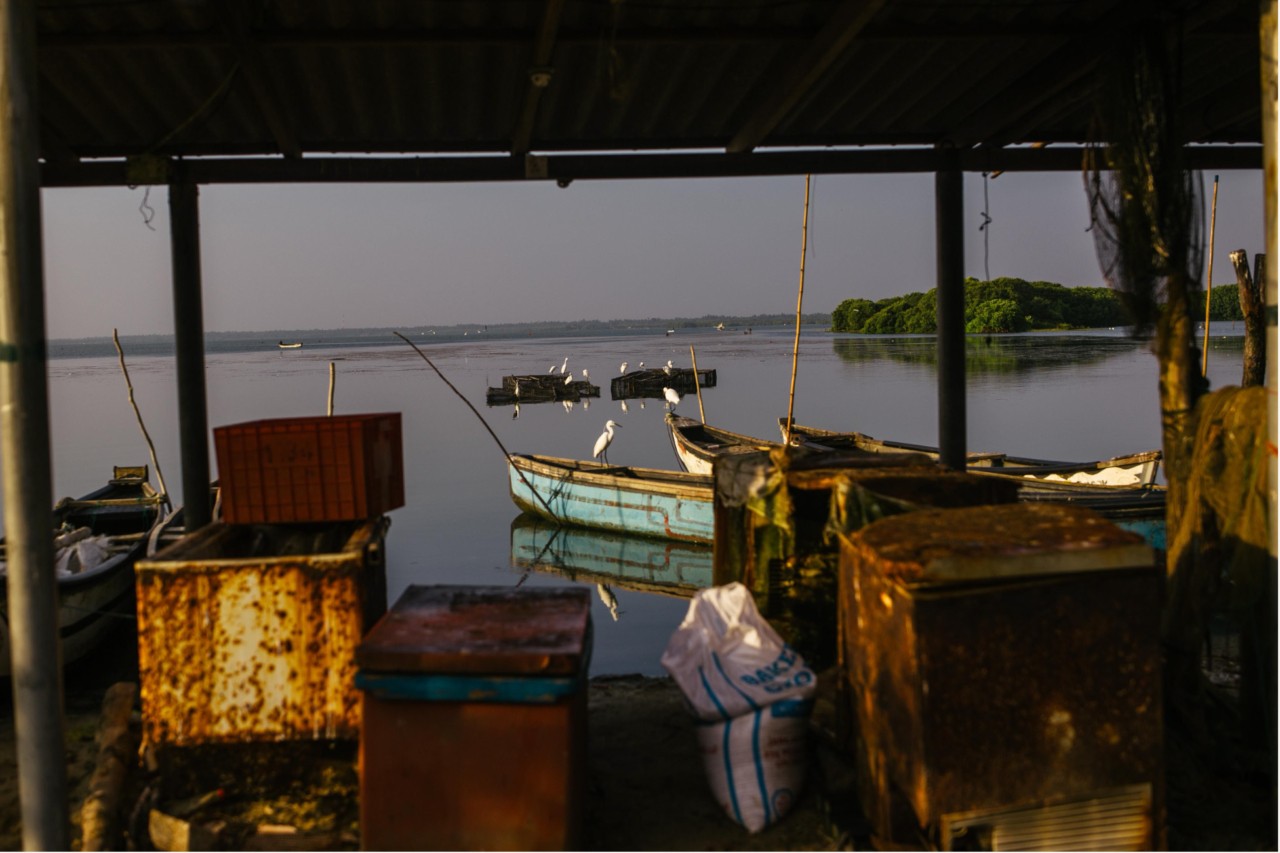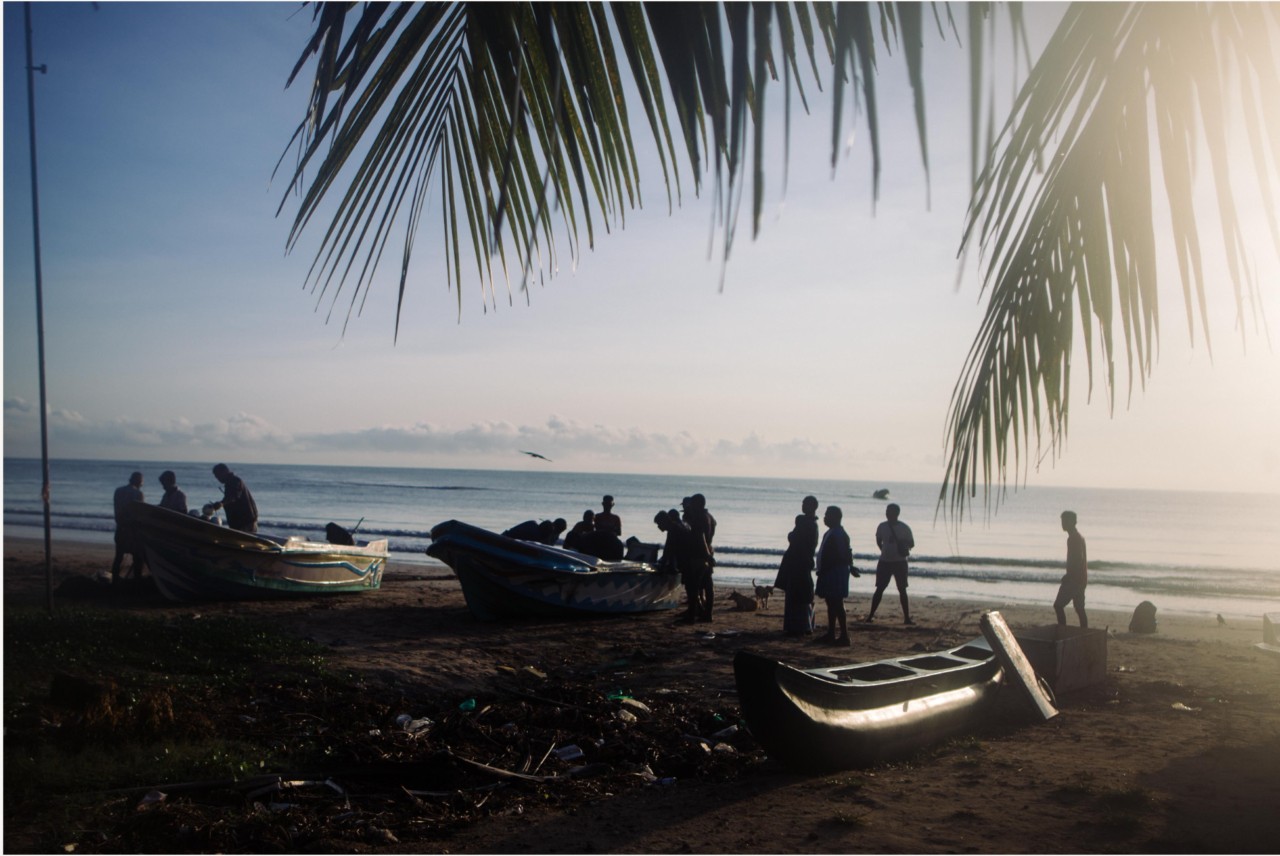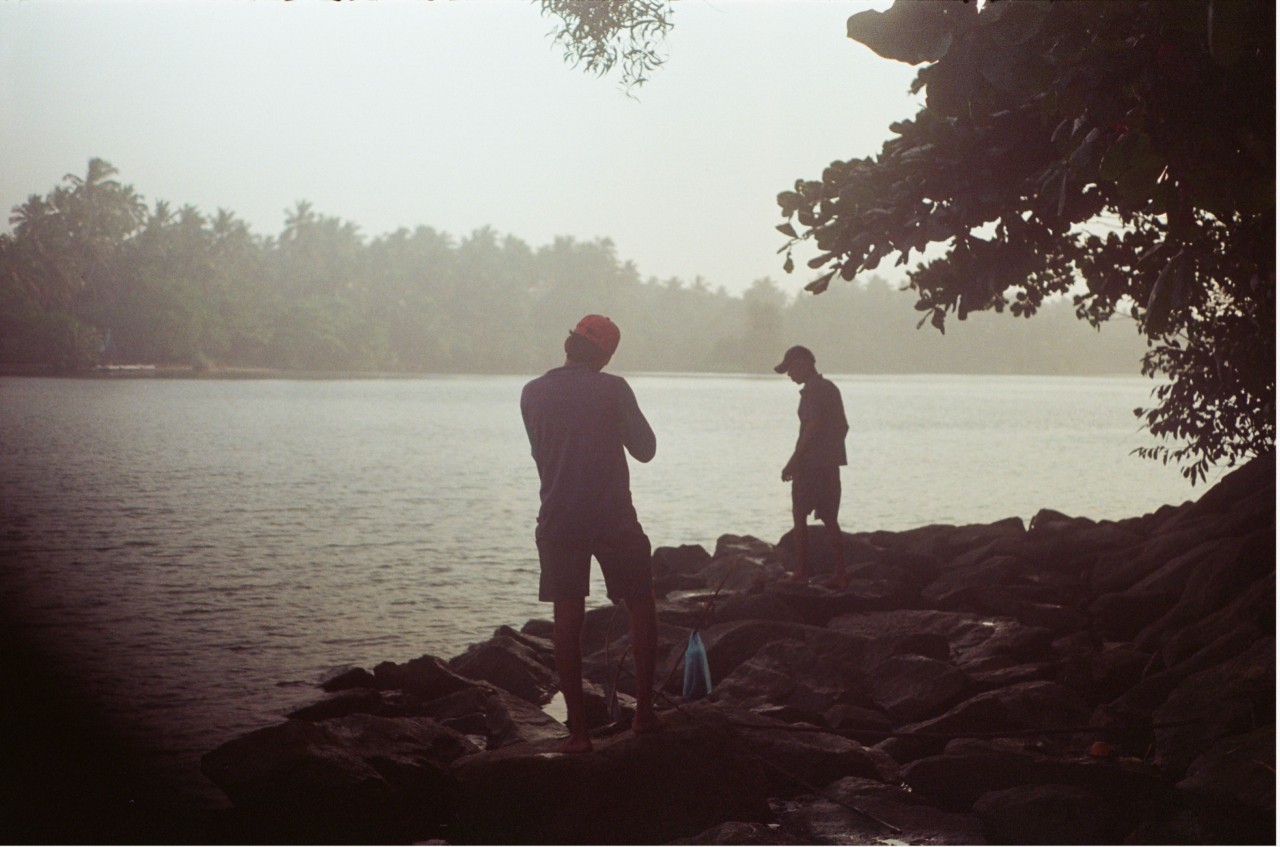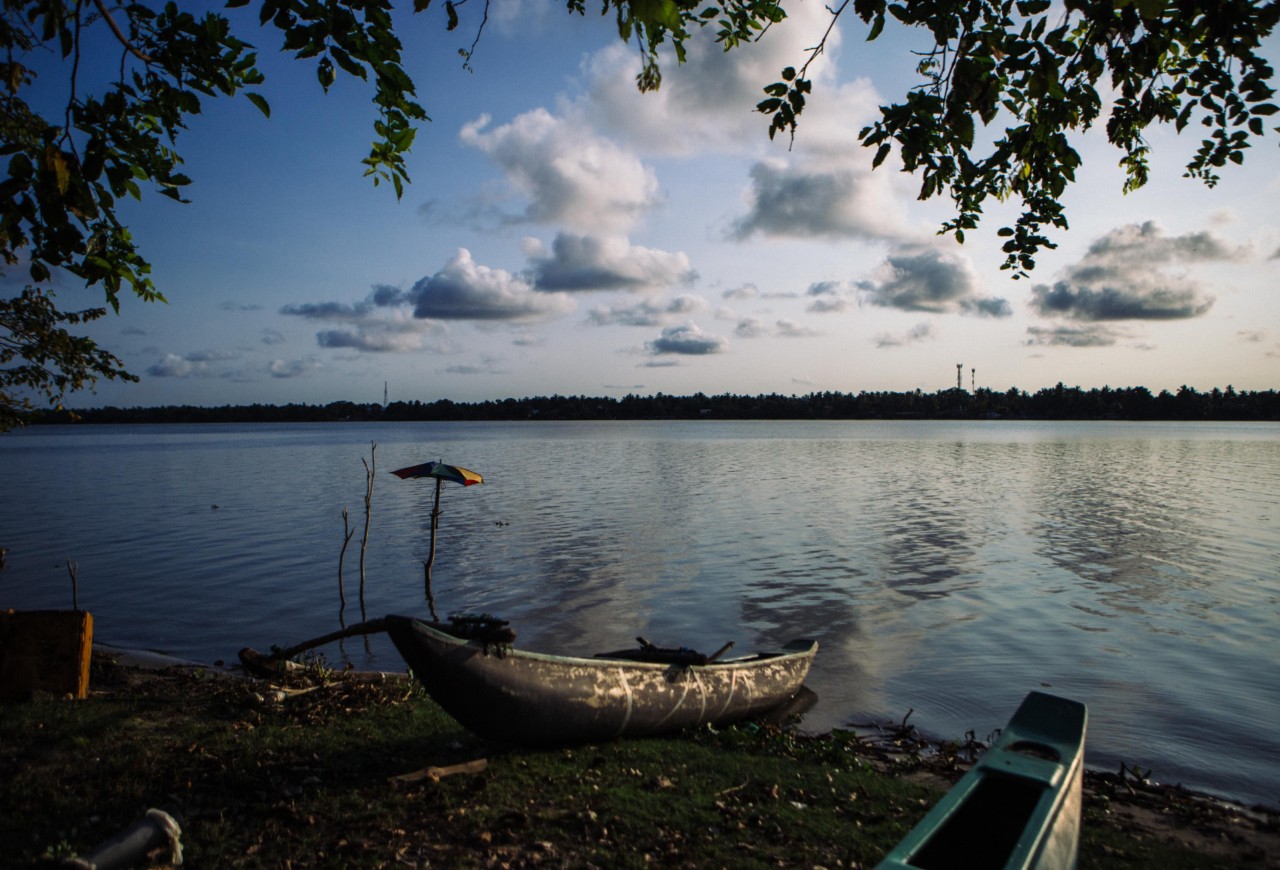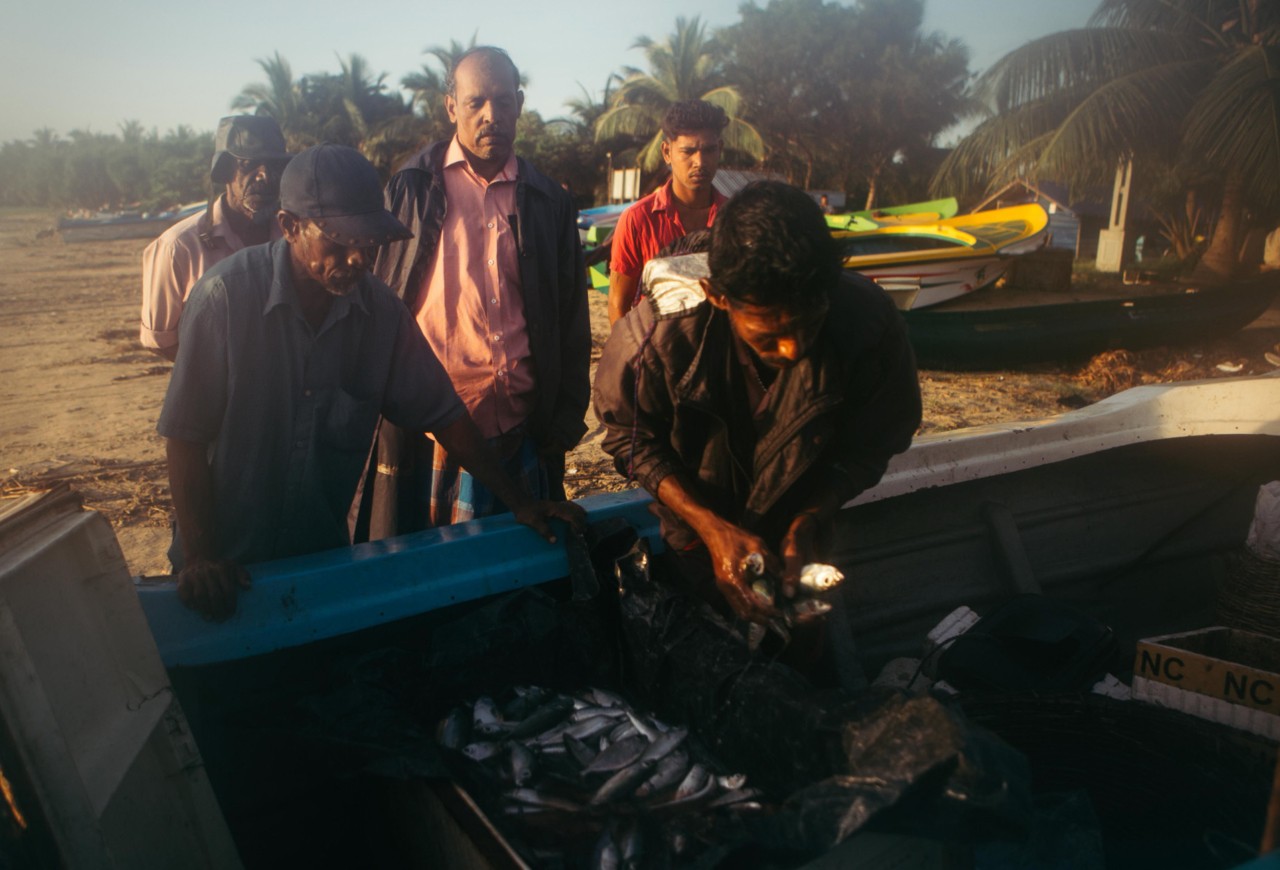

In Kalpitiya, on the northwestern Sri Lankan coast, a lagoon fisherman rinses his daily catch.
WORDS and photographs BY KANG-CHUN CHENG
For years, 62-year-old Lawrence Jayanth has been struggling with his health. A former fisherman-turned-dried fish seller, and now a tuk-tuk driver approaching retirement, he’s sprightly and eager to drive me around the coastal city of Negombo, a skip north of Colombo, Sri Lanka’s capital city. Dubbed “Little Rome” for its 50-plus cathedrals, the prolific iconography is a vestige of Portuguese, Dutch, and British colonial rule.
Negombo is a bastion of the nation’s fishing communities. It’s just after six in the morning after a sleepless red-eye flight, but business is well underway at the fish market. Skippers and catamaran boats are docking from overnight trips, heaving with baskets of prawns; skipjack tuna, red snappers, and manta rays are disentangled from nets and weighed. On land, they’re quickly packed in ice: Some are sold right at the adjacent open-air market, others are exported to a bevy of domestic and international buyers. Local shoppers peruse the offerings, prodding at quivering slabs of fish or queueing for the auction. Butchers idle behind their chopping blocks, sipping tea or chewing betel nuts, ready to serve the next customer. Jayanth selects some anchovies and tilapia to take home for his wife but says he’ll return for fresher prawns later.
Last year, Jayanth’s heart issues culminated in an emergency open-heart surgery. That’s the extent of what he knows—he said his doctors didn’t delve too deeply into his health details.
“But not long after that, I started having kidney problems too,” he recalled. Since then, he’s had dialysis twice a week, an exhausting four-hour procedure that leaves him feeling queasy.
Although Jayanth patronizes Negombo’s government-run District General Hospital government, where treatment is free of charge, he loses income by not working those days. On average, he spends 8,000 rupees (about $25.50) a month on medication—far from chump change in a place where a typical monthly salary is $190 a month.
Sri Lanka has been undergoing an economic meltdown since 2019—the culmination of years of weak economic policies and corruption. The island nation currently owes more than $7 billion to China, $1 billion to India, and has respectively $3 billion and $600 million loans from the International Monetary Fund and World Bank. Inflation soared as high as 70% in 2022. Self-employed and low-income citizens have been bearing the brunt of the catastrophe, experiencing power cuts and shortages in fuel, food, and medicine.

Across Sri Lanka, epidemic levels of kidney disease are plaguing even healthy individuals.
To make ends meet, Jayanth sold 10 perch of his land (0.0625 acres) for four million Sri Lankan rupees, roughly $12,787. This cuts into the land inheritance he’s planning on dividing between his son and daughter: Only 14 perches remain. “This economy has made our lives so difficult,” said his daughter, Neminda, who works as a tailor from their shared home, specializing in wedding dresses and saris. “There isn’t good food for our children. Even a block of cheese at the store costs too much.”
In part, Jayanth’s kidney issues can be traced back to his diabetes. Over time, high blood sugar damages blood vessels in the organ. But across Sri Lanka, epidemic levels of kidney disease are plaguing even healthy individuals.
The International Water Management Institute estimates that 150,000 people in Sri Lanka are affected by chronic kidney disease (CKD). In the nation’s disease hotspots, 15.4% of households have at least one resident diagnosed with CKD. Like Jayanth, two-thirds of affected individuals also suffer from hypertension or diabetes, but the remaining third have neither. These cases of so-called chronic kidney disease of unknown etiology, or CKDu, have surged in rural areas around the world. The illness is asymptomatic early on, so it typically isn’t diagnosed until the late stages. But once the diagnosis is in, treatment is a race against the clock.
There have been countless attempts to identify the causes of CKDu. A 2013 publication by the World Health Organization and the Sri Lankan Ministry of Health identified multiple concerning contaminants, including pesticides and heavy metals in food and drinking water. Last year, a review of 25 studies from around the world reaffirmed these risk factors. High and rising temperatures put an additional burden on kidneys—a major concern because Sri Lanka is one of the hottest countries in the world.
“The kidney is highly susceptible to environmental influences,” said Nishad Jayasundara, an environmental toxicologist at Duke University who grew up in Sri Lanka. “Heat stress is one [factor] that directly affects and induces kidney damage.” That happened before climate change but might worsen as the planet heats, he said.
Dr. S.B.A.M. Mujahith, a nephrologist at Batticaloa Teaching Hospital on Sri Lanka’s eastern coast, emphasized the challenge of combating a disease with so many risk factors. “[CKD] is a multi-factorial, rather than an isolated issue,” he said. That makes it challenging to propose effective preventative measures.




While the biological cause of CKDu remains elusive, what’s clearer is the societal root. In some ways, Sri Lanka’s kidney disease epidemic starts about 30 kilometers away from the country’s border: in India.
In the 1960s, India saw severe droughts that ravaged food security, leading to malnutrition and setbacks in development; wars at the Chinese and Pakistani borders broke out in 1962 and 1965, respectively. The subcontinent, struggling with massive food importation and currency devaluation, embarked on what’s been called the Green Revolution to increase the land’s productivity. They invested in high-yielding varieties of seeds, synthetic fertilizers and pesticides, and high-tech machinery. Sri Lanka quickly followed suit.
Traditional agriculture in Sri Lanka had already been crippled by colonization. That only became more deeply entrenched when the government began offering a fertilizer subsidy in 1962. Farmers became dependent on external applications: namely urea, triple super phosphate, and muriate of potash. That persisted for decades: According to the Food and Agriculture Organization of the United Nations, pesticide use in the nation increased by 43% from 1991-2018.
Many researchers and doctors in Sri Lanka point to agrochemicals as catalysts for the upsurge in CKDu. These days, “mineral [drinking] water is contaminated with pesticides and wastewater,” said Maya I. Wijayathunga, a general practitioner at Negombo’s District General Hospital. We’re standing in the hospital’s dialysis unit, where she currently treats 75 patients each week. “And with heat levels rising, that’s another negative influence on patients.”
Rising temperatures are a double whammy, according to Jayasundara of Duke University. Because heat accelerates evaporation, it concentrates the pollutants in the water column.
There have been attempts to mitigate the impact of agrochemicals, but they have been far from popular. In April 2021, former president Gotabaya Rajapaksa’s cabinet passed a blanket ban on the import of chemical fertilizers and pesticides, which he argued would mitigate “adverse health and environmental impacts.” Rajapaksa had promised to transition Sri Lanka to organic agriculture, but over a decade—not overnight. Everyone was caught off guard, there was no time to pivot, and harvests across the island plummeted.
“His ban was the first step that made him hugely unpopular,” Jayasundara explained. “This is an agricultural country where the livelihoods of 80% of the population—rice farming, tea estates—all collapsed to some extent.” Eventually, the president resigned and fled the country. The ban was rescinded in 2021.




Others have taken prevention into their own hands. E.G. Sunanda Lanka, a 49-year-old in the serene village of Ambagaswewa, grows rice for his family. Their home is a picture of agrarian peace—their three dogs roam the grounds, lush with flowering vines and shrubs. A small footbridge leads the way over a small stream in their front yard. The father of two teenage boys, Lanka also teaches Buddhism and Sinhala at the local school. His family switched to filtered water for drinking purposes seven years ago—though they still use well water for cooking and other household needs.
“This [kidney] issue has been going on for more than 15 or 20 years,” he told me over tea and snacks in their living room, decorated by his son’s paintings. Since 2018, he’s helped researchers from Ruhuna University collect well-water and urine samples from students at his school to test for fluoride and cadmium levels.
Last September, despite being tuned in to the issue and having a clean bill of health, he started experiencing pain in his stomach and sides. An MRI revealed an 18-millimeter stone lodged in his right kidney. “The doctor told me to drink more water,” he recounted. The situation has somewhat stabilized, but Lanka is waiting for an operation.
“You might go to the local hospital and they say that the machines aren’t working, or you have to wait months for dialysis you need right now.”
His illness was stressful for the family. His 16-year-old son, Rasanga, is keenly aware that most of his father’s salary is spent on his classes. Paying for textbooks has been difficult after the diagnosis, he told me. But most importantly, he’s anxious to know if his father will be okay.
Most people in remote areas like Ambagaswewa can’t afford private hospitals, but government ones are often underequipped, according to Lanka: “You might go to the local hospital and they say that the machines aren’t working, or you have to wait months for dialysis you need right now.”
In that regard, Jayanth, the Tuk-Tuk driver in Negombo, might be considered fortunate. We reconnected at the end of my trip. When we first met, his creatine levels were high—an indication of kidney infection or failure. But miraculously, the doctor just told him that they’ve since stabilized. He can stop dialysis for the time being.
Jayanth is happy that his body is healing, but he still feels weak and needs several naps a day. It’s unclear how long he will stay off dialysis. But, despite the uncertainty, he’s one of the lucky ones.
“This is very, very rare,” a nurse at his renal unit told him. “Most people never recover.”


Inside a Mysterious Epidemic of Kidney Disease
